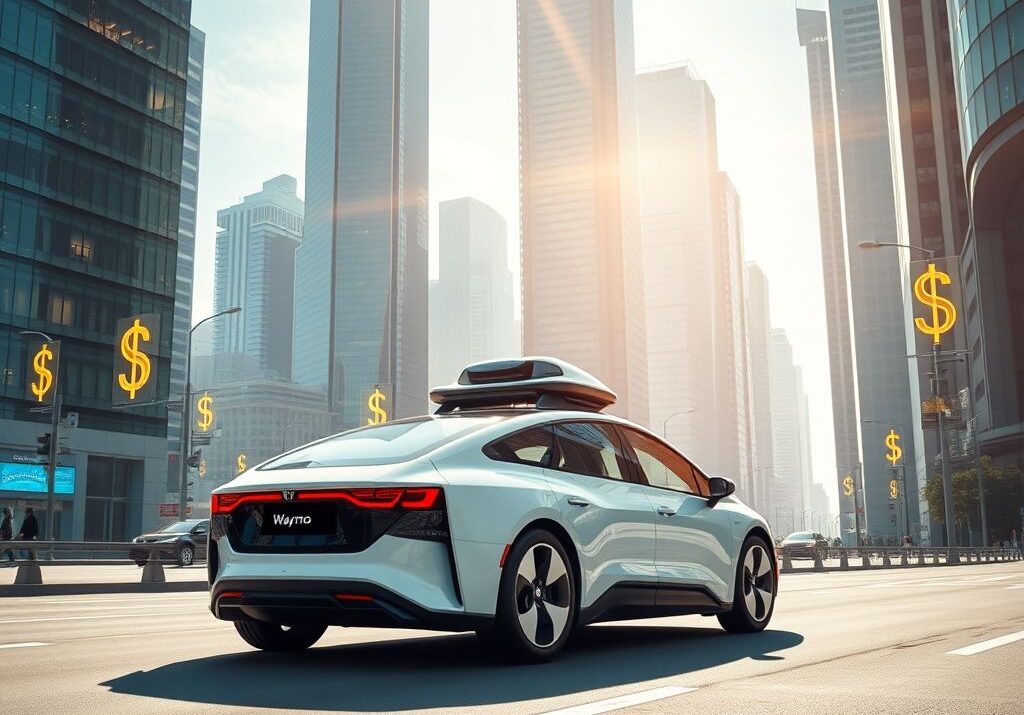Ever wondered how much it really costs to build the future? I was just digging through the latest TechCrunch Mobility newsletter, specifically their piece on Waymo’s expenses, and it got me thinking. We always hear about the potential of self-driving cars, but rarely do we see the cold, hard numbers behind making that potential a reality.
The article, aptly titled “The Cost of Waymo,” doesn’t sugarcoat anything. We’re talking about serious investment in research, development, testing, and deployment. Think about it: creating a system that can safely navigate complex traffic situations, predict pedestrian behavior, and adapt to unpredictable weather in Cameroon (or anywhere else!) isn’t exactly cheap.
It made me consider, beyond the immediate financial cost, what are the other factors involved? Let’s break down some insights:
Beyond the Billions: What’s Driving Waymo’s Expenses?
- Massive Data Acquisition & Processing: Self-driving cars are data-hungry beasts. They need to collect, analyze, and learn from vast amounts of information in real-time. According to a McKinsey report, data acquisition and management can account for up to 40% of the total development cost of autonomous vehicles.
- High-Tech Hardware & Software: We’re talking cutting-edge sensors, LiDAR systems, powerful computers, and sophisticated AI algorithms. The cost of these components, even at scale, remains significant. In fact, estimations show that lidar sensors alone could account for 30% of the vehicle cost [Source: Business Insider Intelligence].
- Extensive Testing & Simulation: Before unleashing self-driving cars onto public roads, companies like Waymo need to conduct rigorous testing in both real-world and simulated environments. This requires dedicated test fleets, specialized facilities, and teams of engineers. Rand Corporation estimated that autonomous vehicles need to be tested for hundreds of millions, sometimes even billions, of miles to demonstrate their reliability and safety.
- Regulatory Hurdles & Legal Considerations: The legal and regulatory landscape for self-driving cars is still evolving. Companies like Waymo need to navigate a complex web of rules and regulations, which can add to their costs. The Brookings Institute highlighted the need for standardized regulations to reduce uncertainty and encourage innovation.
- Talent Acquisition & Retention: Building a self-driving car company requires attracting and retaining top talent in fields like robotics, AI, and engineering. Competition for these skilled professionals is fierce, which drives up salaries and benefits.
5 Key Takeaways About the Cost of Waymo (and the Future of Self-Driving):
- Self-driving tech is a long game. Don’t expect widespread adoption overnight. The investment is huge, and the payoff will take time.
- Data is king (and expensive). The more data a self-driving system has, the better it performs. But gathering, processing, and storing that data comes at a cost.
- Regulation matters. Clear and consistent regulations can help drive innovation and reduce uncertainty for companies like Waymo.
- Hardware costs are still a barrier. While sensor technology is improving, the cost of high-performance LiDAR and other components remains a significant hurdle.
- Safety is paramount. Ultimately, the cost of self-driving technology needs to be balanced against the potential safety benefits of reduced accidents and improved mobility.
The TechCrunch Mobility piece is a great reminder that innovation comes with a price. It’s important to understand the costs involved so we can have a realistic conversation about the future of self-driving cars and how they might impact our lives in Cameroon and beyond.
Frequently Asked Questions (FAQs) About Waymo and Self-Driving Car Costs:
- What is Waymo’s primary business model? Waymo primarily focuses on developing and deploying autonomous driving technology, either as a service (robotaxi) or through partnerships with other companies.
- How does Waymo’s technology work? Waymo uses a combination of sensors (LiDAR, cameras, radar) and AI software to perceive its surroundings and navigate safely.
- Is Waymo the only company developing self-driving technology? No, companies like Tesla, Cruise, and Argo AI are also major players in the autonomous vehicle space.
- What are the biggest challenges facing the self-driving car industry? Challenges include cost, safety, regulatory uncertainty, and public acceptance.
- How are self-driving cars tested for safety? Testing involves simulations, closed-course testing, and on-road testing with safety drivers.
- What level of autonomy does Waymo’s technology offer? Waymo is working towards Level 4 and Level 5 autonomy, meaning the vehicle can handle all driving tasks in certain conditions without human intervention.
- What are the potential benefits of self-driving cars? Benefits include increased safety, reduced traffic congestion, improved accessibility for people with disabilities, and lower transportation costs.
- How will self-driving cars impact jobs? The introduction of self-driving cars could lead to job losses in some transportation-related industries but also create new jobs in areas like software development and data analysis.
- What is the regulatory framework for self-driving cars in Cameroon? Cameroon is still developing its regulatory framework for self-driving cars, and it would likely involve collaboration with international standards.
- How can I learn more about self-driving car technology? You can follow industry news outlets like TechCrunch Mobility, research reports from companies like McKinsey and Rand, and attend industry conferences and webinars.








